Last updated on July 10th, 2025 at 11:23 am
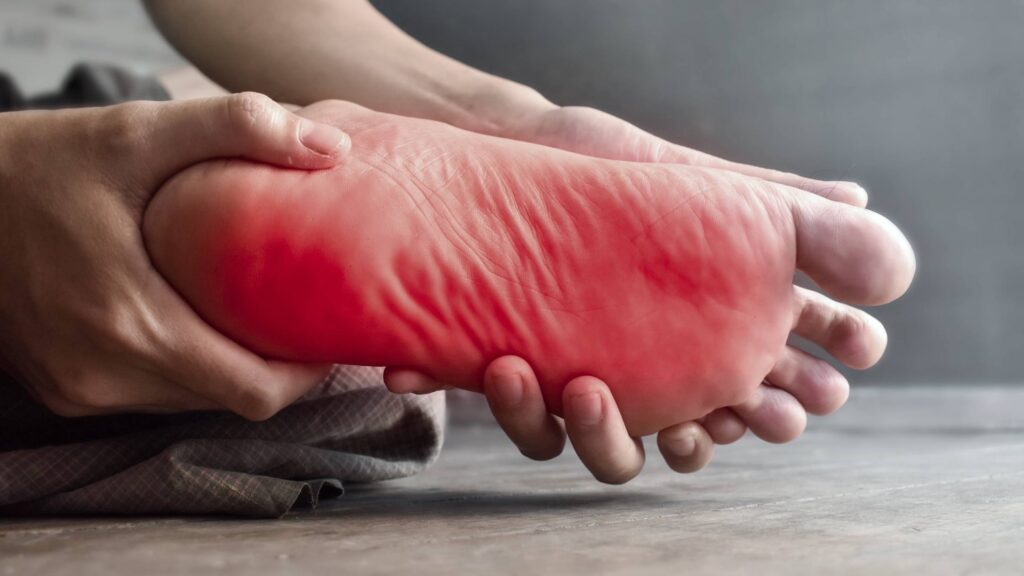
Quick Summary: How to Cure Plantar Fasciitis in 7 Days
✅ Self-massage with a pen (5 mins daily)
✅ Stretching exercises (2x/day)
✅ Taping technique (for instant relief)
✅ Tennis ball massage (reduces inflammation)
✅ Silicone heel cups (support & cushioning)
How to cure plantar fasciitis in one week?
If you have pain in your heels and the very first step in the morning is painful for you then most probably you are suffering from plantar fasciitis. We also call plantar fasciitis a heel spur.
But you know, you can quickly get rid of it by using some simple tips and a few home remedies. The good thing is that it doesn’t require any complicated machine; you just need a pen and a tennis ball.
Before we start, let’s recap what plantar fasciitis is and its common symptoms. If you wish to go directly to the tips, then use this table to skip to the tips.
- How to Cure Plantar Fasciitis in 7 Days: 5 Proven Methods
- 1) Plantar Fasciitis Self-Massage: Relieve Pain in 5 Minutes (Step-by-Step)
- 2) 5 Best Plantar Fasciitis Stretches for Immediate Relief
- 3) Heel Taping for Plantar Fasciitis: Walk Pain-Free (Guide + Photos)
- 3) Tennis ball to self-massage for heel pain relief
- 4) Best Silicone Heel Pads for Plantar Fasciitis (Instant Cushioning)
- Final Tips to Cure Plantar Fasciitis Faster
- FAQ
How to Cure Plantar Fasciitis in 7 Days: 5 Proven Methods
To cure plantar fasciitis in one week, you need to regularly perform some of the most effective self-massage techniques, exercises, and a few home tips. We will discuss this one by one as we progress, but for a clear understanding, we must first know what plantar fasciitis is and why it causes heel pain.
By definition, plantar fasciitis is inflammation of the plantar fascia (plantar aponeurosis) at the attachment of the tuberosity of the calcaneum.
Plantar fasciitis is the most common cause of inferior heel pain, i.e., pain on the inferior (lower) part of the heel. However, when pain occurs on the back of the heel, it could be due to calcaneal tendonitis/ insertional achilles tendinitis.

The plantar fascia is a flap-like structure deep in the sole of the foot. It is attached to the calcaneum in the heel and extends to attach to each bone of the finger (see figure). It helps maintain the arch of the foot and functions as a shock absorber.
Think of a bow and string, where the bow is our foot, and the string is the plantar fascia (see figure). When we walk, there is continuous stress on the plantar fascia, mainly at its attachment to the heel.
With time due to overstress, it causes inflammation of the plantar fascia at the heel.
Plantar Fasciitis Symptoms: Signs You Shouldn’t Ignore
- Its main clinical feature is severe in the morning, which subsides with walking a little distance.
- Pain on the inner aspect of the heel.
- X-ray sometimes reveals bone outgrowth at the attachment of the plantar fascia at the heel.
Now, let us progress to our tips.
1) Plantar Fasciitis Self-Massage: Relieve Pain in 5 Minutes (Step-by-Step)
The technique we are going to discuss is myofascial release. Myofascial release is a soft tissue mobilisation technique; it has been considered one of the physical therapy techniques for chronic conditions that cause tightness and restriction in soft tissue.
Essentially, it involves applying pressure to specific areas of the body to release tension and pain. The technique was developed on the basis of the idea that fascia, a connective tissue found throughout the body, reorganises itself in response to physical stress and thickens along the tension line1.
Traditionally, physiotherapists use their thumbs to apply pressure during myofascial release. However, in everyday practice, you might find that an object with a blunt end has the same effect, and the basic principle remains the same.
If you’re interested in learning this technique, you’ll need a pen or a similar object with a blunt end. Remember not to use the sharp end.
- First, sit comfortably on a chair and place the affected painful heel on the other leg.
- Then, use your thumb to search for the tender spot around the heel. Palpate with your thumb around the heel to look for tender or painful points. They will most likely be on the inner side of your heel.
- Once you have found the tender point, use the blunt end of the pen. Place it on the tender spot and press gently but firmly. Remember to use the blunt end of the pen or another similar object with blunt ends.
- Once you have put pressure, massage in a circular motion while maintaining the pressure of the pen.
- This should be done for 4 to 5 minutes.
- Repeat the whole process twice daily for one week, and you should start to feel relief from your heel pain.
2) 5 Best Plantar Fasciitis Stretches for Immediate Relief
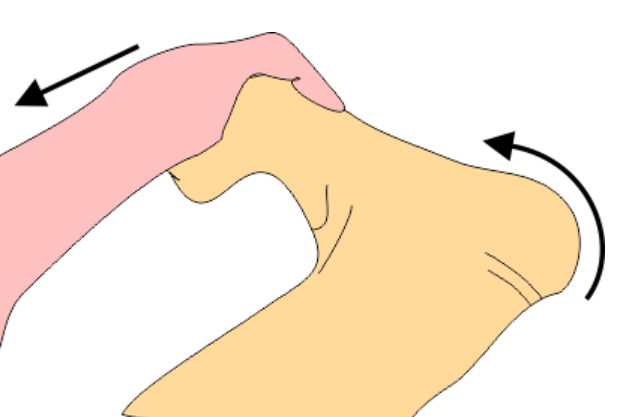
Plantar heel pain is a common condition that can cause discomfort and limit mobility. One of the most commonly recommended treatments for this type of pain is stretching.
By stretching the contracted fascia, which is the tissue that connects the heel bone to the toes, you can experience relief from the pain.
The benefits of stretching can be felt almost immediately. In fact, studies have shown that the main pain-relieving benefits of stretching occur within the first two weeks to four months of starting a stretching routine1.
- To stretch your plantar fascia, first, sit comfortably on a chair and place the affected heel over your opposite leg.
- Next, stretch the fascia using your hands, placing one hand over the toes and the other over the ball of the foot.
- Then, gently bring a bending movement at the ankle joint and forcefully bend the toes toward your shin. This motion creates a stretching force on the plantar fascia.
- By performing this stretching routine regularly, you can experience significant relief from plantar heel pain.
3) Heel Taping for Plantar Fasciitis: Walk Pain-Free (Guide + Photos)
The taping technique is a simple yet effective treatment for this condition. Taping helps to protect the fascia, a band of tissue that connects the heel bone to the toes and supports the arch of the foot.
Additionally, it allows time for healing to occur and enables the patient to walk again, even if they are experiencing severe pain1.
The taping technique involves the use of two pieces of kinesiology tape. It is recommended to seek the assistance of a physiotherapist for taping, as they can ensure that the technique is performed correctly.
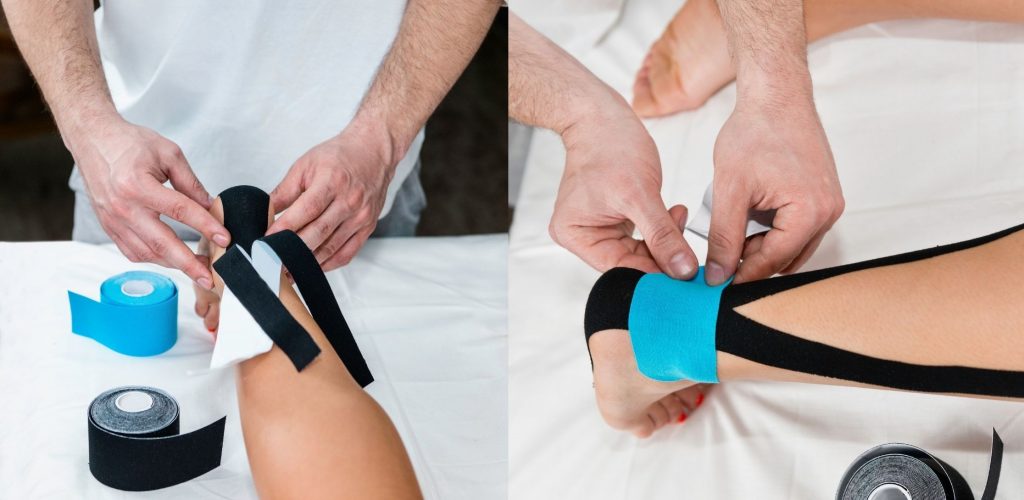
- The first step is to position the foot in a neutral position.
- Then, one end of the tape should be pasted on the posterior of the calcaneum (heel bone) and pulled towards the toes, covering the plantar surface of the foot while maintaining slight tension.
- The second piece of tape is put around the ankle in a figure of eight, maintaining slight tension. This helps to absorb some of the tension that would have been in the fascia, providing additional support and relief from pain. It is essential to ensure that the tape is tightened while standing to ensure that it is not too tight or too loose.
- INCREASES MOBILITY BY PROVIDING SUPPORT – Designed to enhance support and stability for common sports injuries like elbo…
- SUPPORTS MUSCLES & JOINTS – Professional and serious athletes use this elastic sports tape to support their muscles, joi…
- STURDY & WATER RESISTANT – Our Care Science Waterproof Kinesiology Tape is made of elastic and durable material that str…

Research has proved that a combination of myofascial release and stretching is more effective than the combination of myofascial release and taping1.
3) Tennis ball to self-massage for heel pain relief
The technique of using a tennis ball to relieve foot pain is known as self-myofascial release. It works by applying pressure to trigger points in the foot, which can help to release tension and promote relaxation.
This technique is frequently recommended by physiotherapists, athletes, and fitness coaches as a simple and effective way to address foot pain.
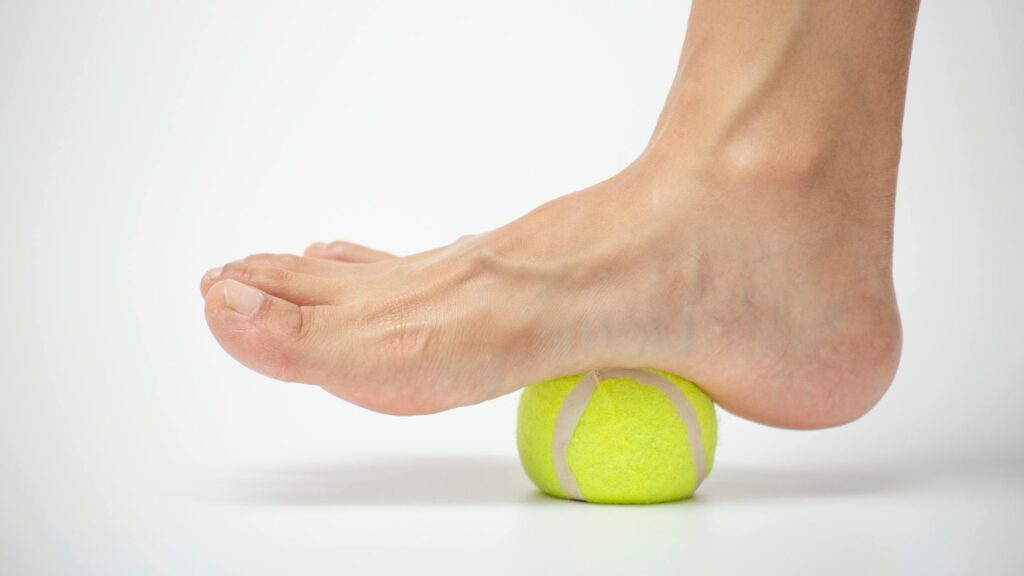
To perform this technique, you will need a tennis ball and a flat surface like a floor or a wall.
- Sit on a chair and place the tennis ball under your foot.
- Roll the ball back and forth under your foot, from your heel to your toes.
- Apply pressure on the ball, especially on the areas that feel tight or tender. You can adjust the pressure by putting more or less weight on the foot.
- Continue rolling the ball for about 5-10 minutes, or until you feel a decrease in pain or discomfort.
- Repeat the process on the other foot.
- You can also perform this technique while standing against a wall. Place the ball between the wall and your foot, and roll it back and forth.
By regularly performing this self-massage technique, you can help loosen tight muscles and reduce inflammation in your foot. It’s a great complement to other treatments for plantar fasciitis, such as stretching exercises and wearing supportive shoes.
4) Best Silicone Heel Pads for Plantar Fasciitis (Instant Cushioning)
When you have a severe ain then I would strongly suggest you use a silicone gel cup with the footwear; you just need to insert it inside the shoe. For home, you can use silicone gel socks that are recommended for females who can use them with sandals.
There is a special heel pad made of silicone gel, which is very, very soft, known as a silicone heel pad. But you should learn the correct method to use a silicone heel cup; you need to insert it in your shoe, and it can be carried anywhere.
Final Tips to Cure Plantar Fasciitis Faster
Plantar fasciitis is a common condition that can cause severe heel pain. However, by following the tips and remedies mentioned above, you can cure plantar fasciitis in just one week. In addition to this, we highly recommend the following 6 Best Heel Pain Exercises For Quick Relief.
However, if this tip doesn’t work, we recommend visiting your doctor. Depending on the severity of the condition, the doctor may either choose to give the hydrocortisone injection at the tender point or, in extreme cases, may suggest surgical excision of a heel spur.
Try these methods for 7 days and comment below with your results! If pain persists, consult a physiotherapist for personalized treatment.
Also read: 5 Effective Ankle Sprain Exercise and other Tips
FAQ
The author is a physiotherapist who has been practising for the last 17 years. He holds a Bachelor's in Physiotherapy (BPT) from SVNIRTAR (Swami Vivekananda National Institute of Rehabilitation and Research), one of the prestigious physiotherapy schools in India.
Whatever he learns dealing with his patient, he shares it with the world through blogs and e-books. He also owns a YouTube channel, "Sunit Physiotherapist" with over 8 lakh active subscribers. Here, he shares everything he gets to learn serving the patient.
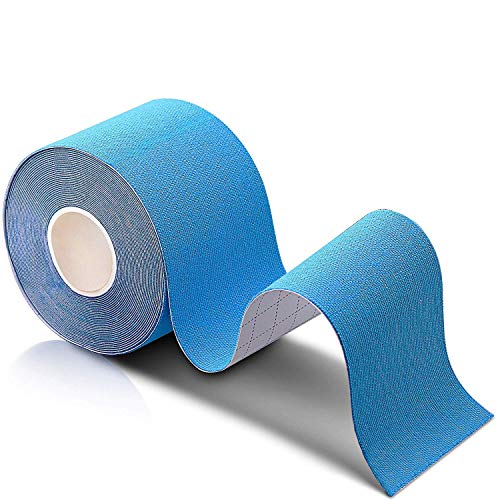

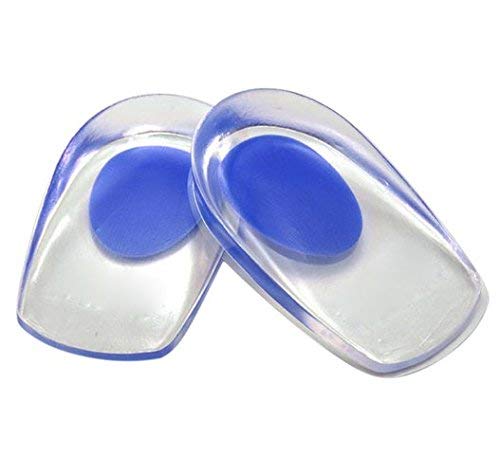
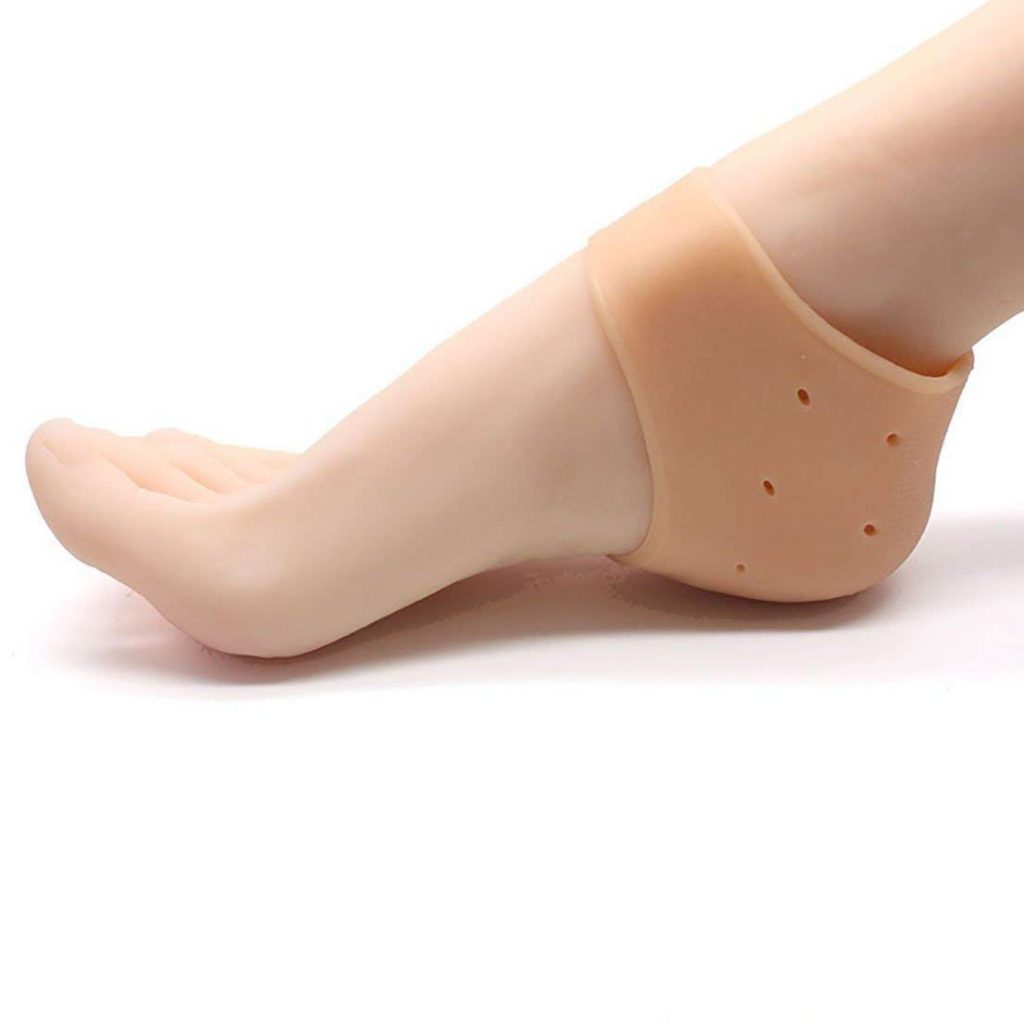


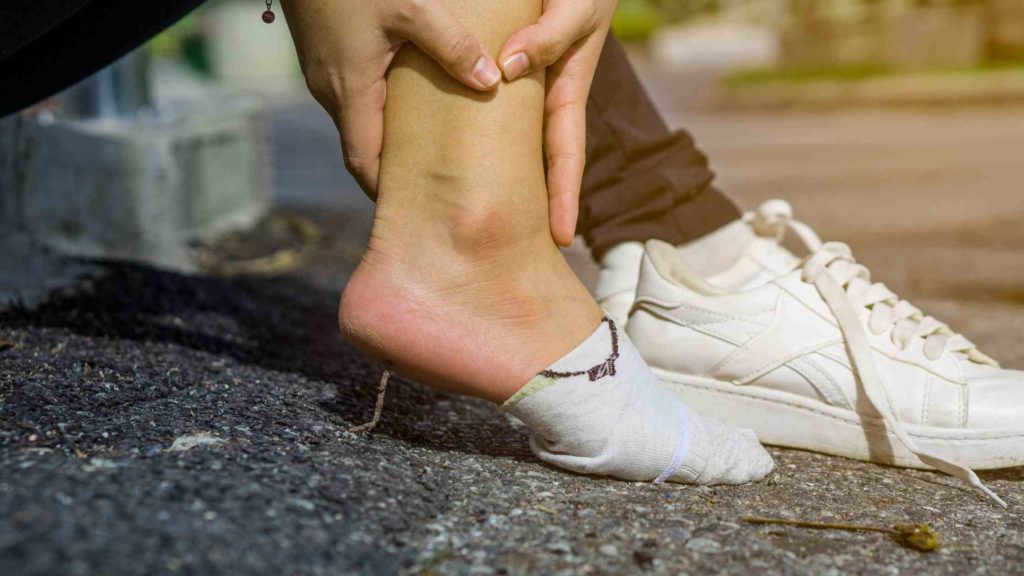
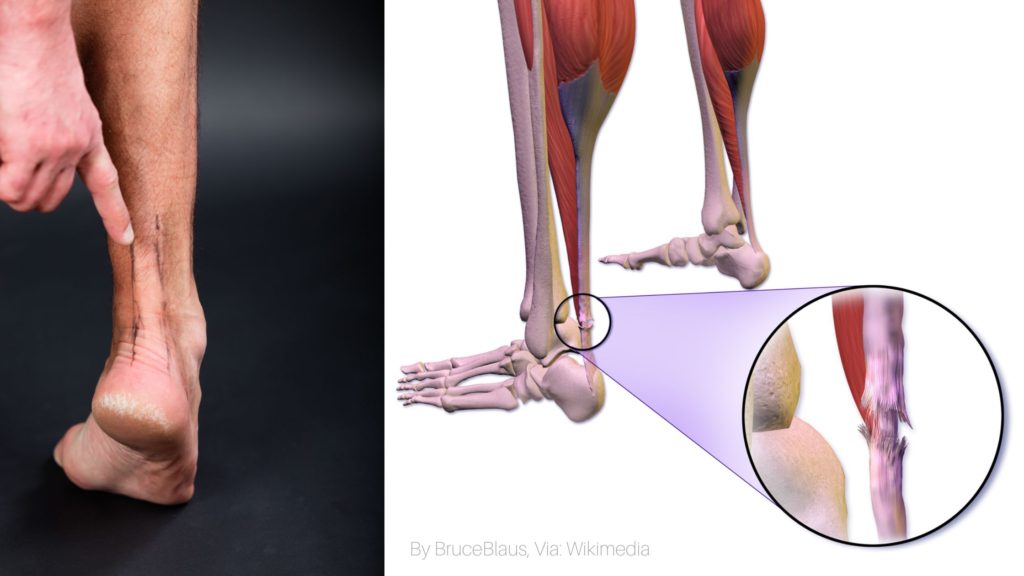
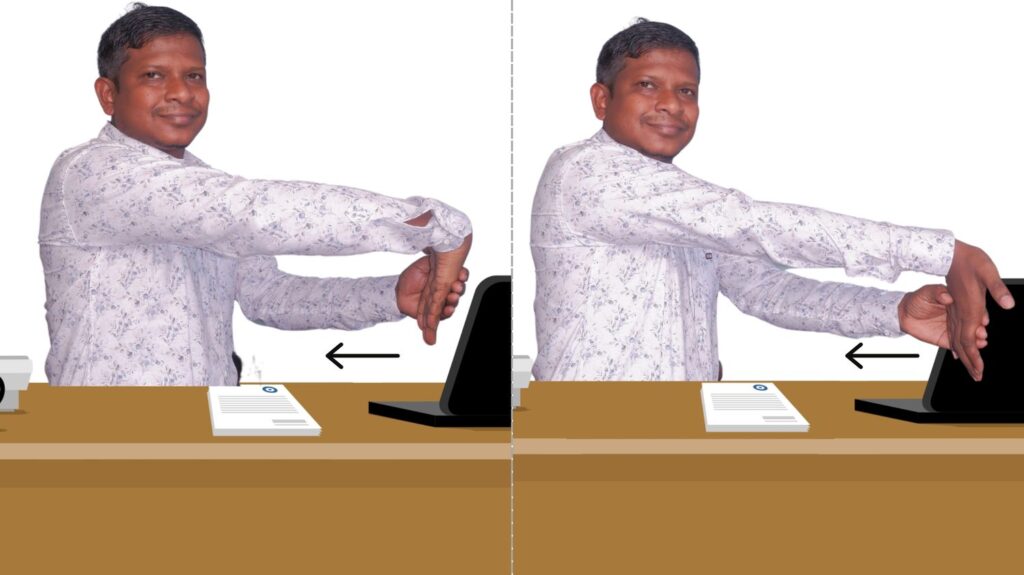

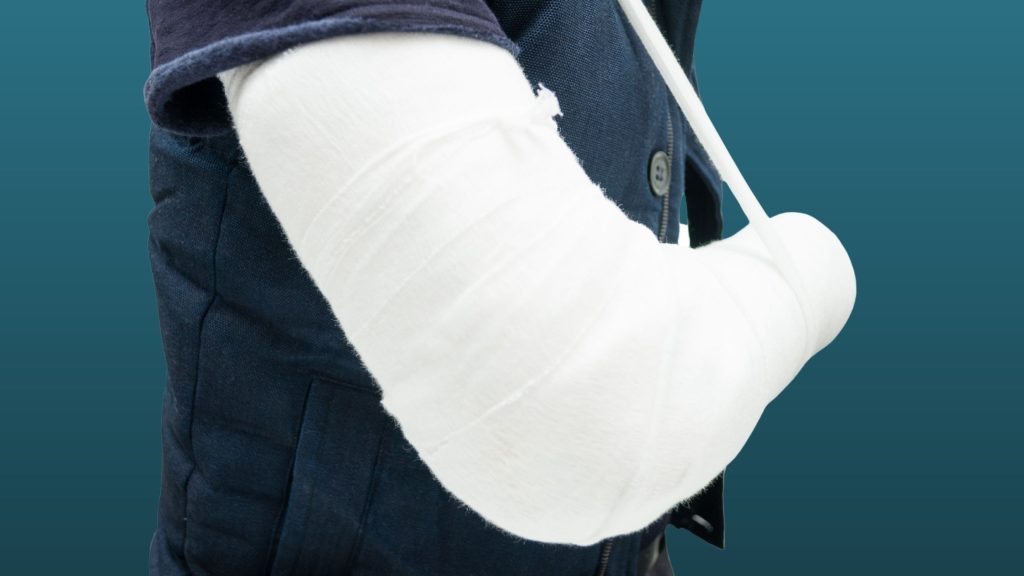
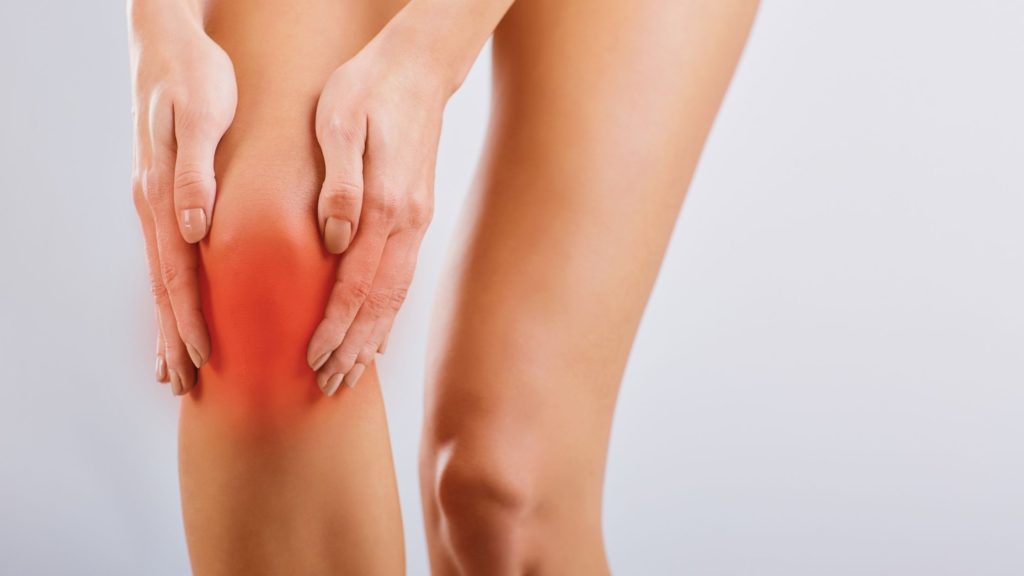
Pingback: How to Cure Plantar Fasciitis in One Week
Pingback: Shoe Inserts for Flat Feet: Types & How it Work
Pingback: How to use silicon heel cup for pain-free heel. : Physiosunit
Pingback: Shoe Inserts for Flat Feet: Types & How it Work : Physiosunit